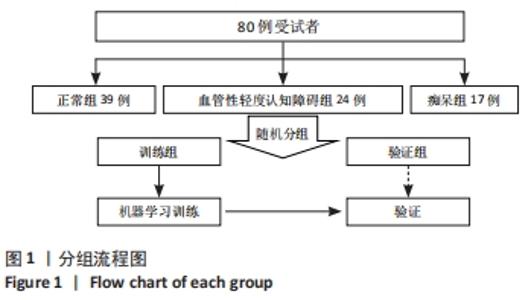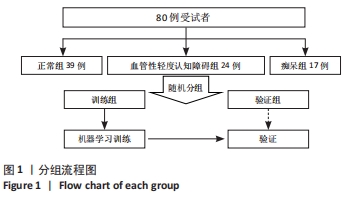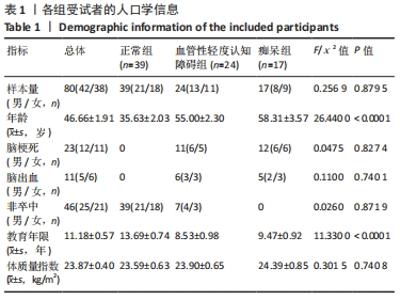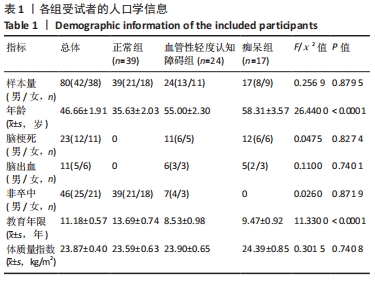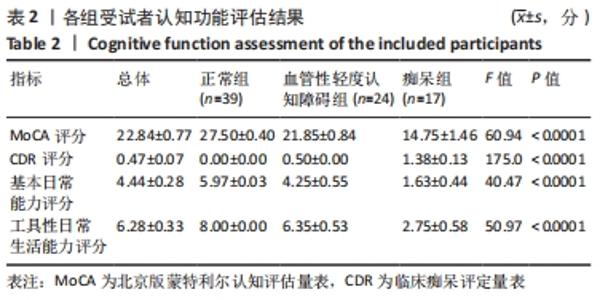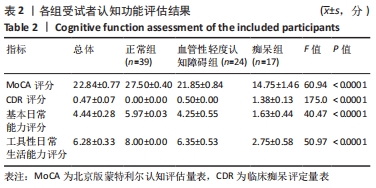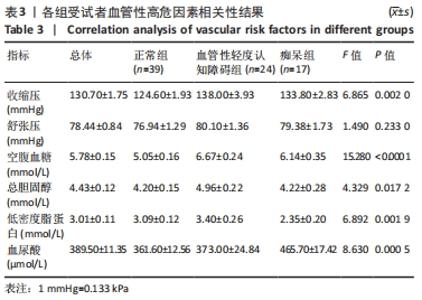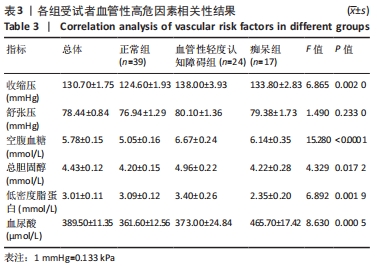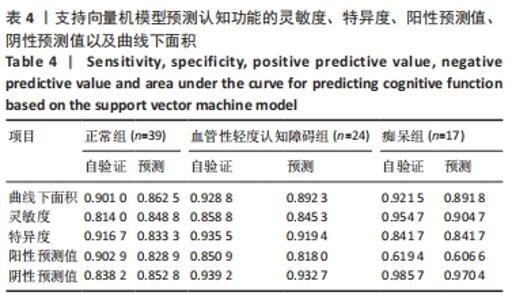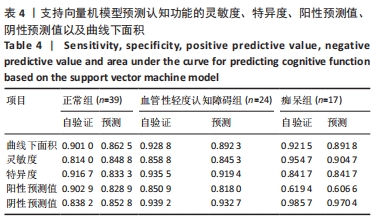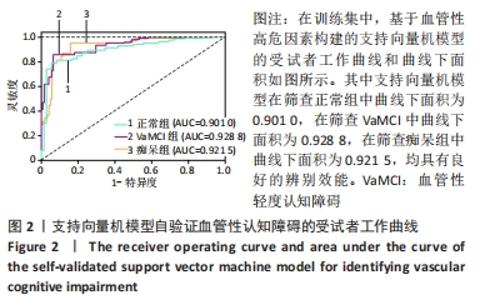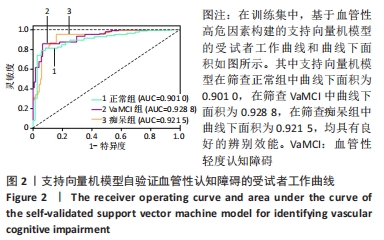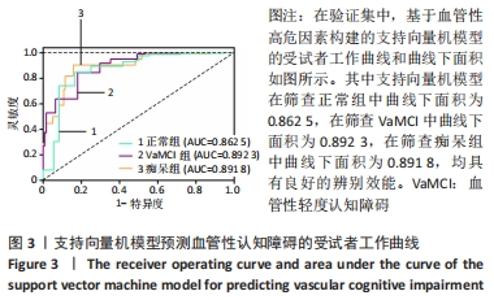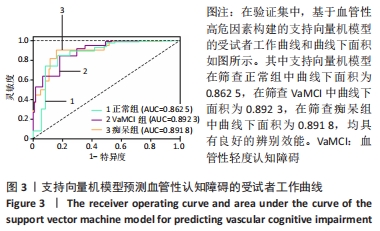[1] VAN DER FLIER WM, SKOOG I, SCHNEIDER JA, et al. Vascular cognitive impairment. Nat Rev Dis Primers. 2018;4:18003.
[2] WORLD HEALTH ORGANIZATION AND ALZHEIMER’S DISEASE INTERNATIONAL, 2020, https://www.alzint.org/about/dementia-facts-figures/dementia-statistics.
[3] 贾建平.重视血管性认知障碍的早期诊断和干预[J].中华神经科杂志,2005,38(1):7-9.
[4] 罗本燕,刘萍,刘晓燕.血管性认知障碍[J].中华神经科杂志,2021, 54(3):267-271.
[5] SUN MK. Potential Therapeutics for Vascular Cognitive Impairment and Dementia. Curr Neuropharmacol. 2018;16(7):1036-1044.
[6] LANGA KM, LEVINE DA. The diagnosis and management of mild cognitive impairment: a clinical review. JAMA. 2014;312(23):2551-2561.
[7] KARSSEMEIJER EGA, AARONSON JA, BOSSERS WJ, et al. Positive effects of combined cognitive and physical exercise training on cognitive function in older adults with mild cognitive impairment or dementia: A meta-analysis. Ageing Res Rev. 2017;40:75-83.
[8] HILL NT, MOWSZOWSKJ L, NAIAMITH SL, et al. Computerized Cognitive Training in Older Adults With Mild Cognitive Impairment or Dementia: A Systematic Review and Meta-Analysis. Am J Psychiatry. 2017,174(4):329-340.
[9] BRETON A, CASEY D, ARNAOUTOGLOU NA. Cognitive tests for the detection of mild cognitive impairment (MCI), the prodromal stage of dementia: Meta-analysis of diagnostic accuracy studies. Int J Geriatr Psychiatry. 2019;34(2):233-242.
[10] GIAU VV, BAGYINSZKY E, AN SSA. Potential Fluid Biomarkers for the Diagnosis of Mild Cognitive Impairment. Int J Mol Sci. 2019;20(17): 4149.
[11] VAN DEN BERG E, GEERLINGS MI, BIESSELS GJ, et al. White Matter Hyperintensities and Cognition in Mild Cognitive Impairment and Alzheimer’s Disease: A Domain-Specific Meta-Analysis. J Alzheimers Dis. 2018;63(2):515-527.
[12] DESMOND DW, TATEMICHI TK, PAIK M, et al. Risk factors for cerebrovascular disease as correlates of cognitive function in a stroke-free cohort. Arch Neurol. 1993;50(2):162-166.
[13] KOVACIC JC, CASTELLANO JM, FUSTER V. The links between complex coronary disease, cerebrovascular disease, and degenerative brain disease. Ann N Y Acad Sci. 2012;1254:99-105.
[14] YANG Z, WANG H, EDWARDS D, et al. Association of blood lipids, atherosclerosis and statin use with dementia and cognitive impairment after stroke: A systematic review and meta-analysis. Ageing Res Rev. 2020;57:100962.
[15] UNGVARI Z, TOTH P, TARANTITN S, et al. Hypertension-induced cognitive impairment: from pathophysiology to public health. Nat Rev Nephrol. 2021;17(10):639-654.
[16] LIU Y, DONG YH, LYU PY, et al. Hypertension-Induced Cerebral Small Vessel Disease Leading to Cognitive Impairment. Chin Med J (Engl). 2018;131(5):615-619.
[17] DEO RC. Machine Learning in Medicine. Circulation. 2015;132(20): 1920-1930.
[18] 黄菲芸,王艳红,李娟娟,等.蒙特利尔认知评估量表在中国中老年人群筛查轻度认知功能障碍中的截断值的系统评价[J].中国循证医学杂志,2017,17(4):450-457.
[19] 杨渊韩,贾建军,JOHN MORRIS.临床痴呆评估量表的应用[J].中华老年医学杂志,2018,37(4):365-366.
[20] JUYA K,Mäkelä M, ERKINJUNTTI T, SULKAYA R, et al. Functional assessment scales in detecting dementia. Age Ageing. 1997;26(5):393-400.
[21] NEMEROFF CB, WEINBERGER D, RUTTER M, et al. DSM-5: a collection of psychiatrist views on the changes, controversies, and future directions. BMC Med. 2013;11:202.
[22] 王伊龙,韩尚容,曹勇,等.中国脑血管病临床管理指南(节选版)——脑血管病高危人群管理[J].中国卒中杂志,2019,14(7):700-708.
[23] ASSOCIATION A. 2019 Alzheimer’s Disease Facts and Figures. Alzheimers & Dementia. 2019;15(3):321-387.
[24] GBD 2015 DISEASE AND INJURY INCIDENCE AND PREVALENCE COLLABORATORS. Global, regional, and national incidence, prevalence, and years lived with disability for 310 diseases and injuries, 1990-2015: a systematic analysis for the Global Burden of Disease Study 2015. Lancet. 2016;388(10053):1545-1602.
[25] XUE M, XU W, OU YN, et al. Diabetes mellitus and risks of cognitive impairment and dementia: A systematic review and meta-analysis of 144 prospective studies. Ageing Res Rev. 2019;55:100944.
[26] HUGHES D, JUDGE C, MURPHY R, et al. Association of Blood Pressure Lowering With Incident Dementia or Cognitive Impairment: A Systematic Review and Meta-analysis. JAMA. 2020;323(19):1934-1944.
[27] LIU Y, ZHONG X, SHEN J, et al. Elevated serum TC and LDL-C levels in Alzheimer’s disease and mild cognitive impairment: A meta-analysis study. Brain Res. 2020;1727:146554.
[28] CHEN C, LI X, LY Y, et al. High Blood Uric Acid Is Associated With Reduced Risks of Mild Cognitive Impairment Among Older Adults in China: A 9-Year Prospective Cohort Study. Front Aging Neurosci. 2021; 13:747686.
[29] PETERS R, XU Y, ANTIKAINEN R, et al. Evaluation of High Cholesterol and Risk of Dementia and Cognitive Decline in Older Adults Using Individual Patient Meta-Analysis. Dement Geriatr Cogn Disord. 2021;50(4): 318-325.
[30] OZER ME, SARICA PO, ARGA KY. New Machine Learning Applications to Accelerate Personalized Medicine in Breast Cancer: Rise of the Support Vector Machines. OMICS. 2020;24(5):241-246.
[31] BUCHLAK QD, ESMAJLI N, LEVEQUE JC, et al. Machine learning applications to clinical decision support in neurosurgery: an artificial intelligence augmented systematic review. Neurosurg Rev. 2020;43(5): 1235-1253.
[32] SIRSAT MS, FERMÉ E, CÂMARA J. Machine Learning for Brain Stroke: A Review. J Stroke Cerebrovasc Dis. 2020;29(10):105162.
|
